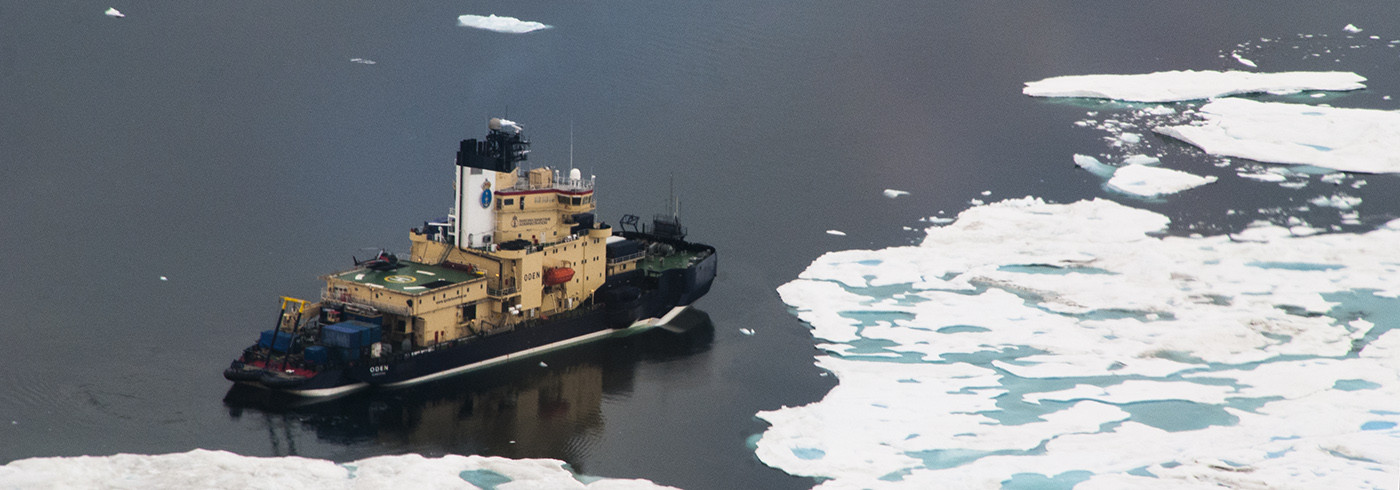Towards understanding ice in Arctic clouds
31 July 2018 - 25 September 2018
The 7th Deck of the Oden Icebreaker where aerosol sampling instruments were deployed. Photo: Grace Porter
Arctic weather is notoriously difficult to model and predict. This is partly due to the inadequate representation of Arctic mixed phase clouds in current models. A mixed phase cloud contains both liquid water and ice. These important particles influence the lifetime, precipitation and radiative properties of the cloud.
We seek to characterise atmospheric ice-nucleating particles (INP), which are the rare aerosol particles responsible for triggering ice formation in supercooled cloud droplets. Field measurements of INP are essential to help elucidate a particle source and begin to understand how we can predict the changes in these clouds, and the effect this will have on the Arctic climate.

Observing the tethered balloon in flight with a payload of custom built aerosol collection instrumentation. Photo: Grace Porter
We used commercial and custom built sampling instruments to collect aerosol samples. We then measured the INP concentrations at varying heights, from the ice surface to above the clouds in order to determine where the INP are present, and where they may have travelled from. To explore the closest potential sources we also investigated the sea water and ice. These samples were analysed using instruments which detect the temperature that supercooled droplets freeze, which allow us to calculate the concentration of INP at each temperature.
This range of measurements from sea to sky will be used to determine whether the concentrations of INP observed could be responsible for observed cloud behaviour, and importantly, where these INP are coming from.
Grace Porter
University of Leeds

The ‘IcePod’ mobile container lab in which collected samples were analysed. Photo: Grace Porter

Balloon site on the ice station. This is where the aerial instruments were deployed on tethered balloons so they could be held at height for a time before being recovered. Photo: Mike Adams

